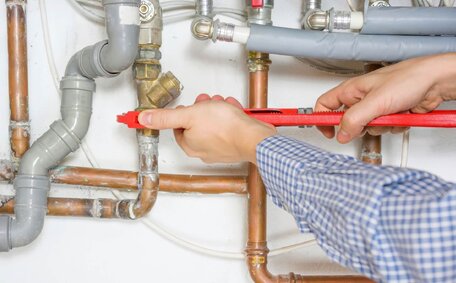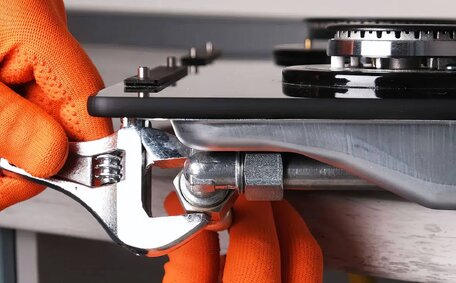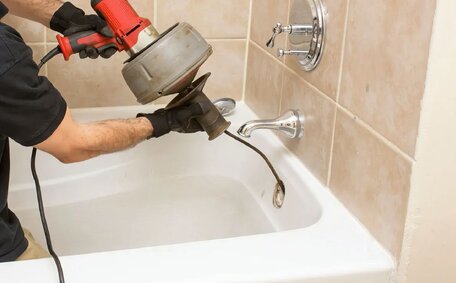
Sustainable Gas Solutions
There are renewable and sustainable gas solutions that can build a greener future. Gas has a key role enabling the transition to renewable energy while reducing emissions.
Read MoreThe progression of gas appliances towards eco-friendly technologies represents a significant advancement in the industry. Traditionally, most ran on natural gas extracted from fossil fuel reserves. However, there has been a major shift towards more sustainable options.
Renewable gases like biomethane and green hydrogen can now be injected into existing gas pipelines. When blended with natural gas, these renewable alternatives significantly curb emissions from residential gas appliances. The shift towards electric and induction cooktops is reflective of a widespread aim to disengage homes from fossil fuels.
Policy changes are further driving this transition. All new homes in Victoria are mandated to implement all electric systems from 2025, reflecting the new government’s commitment to energy efficiency. The NSW government recently announced a plan to achieve net zero emissions by 2050. This will likely see continued growth in eco-friendly appliances as households transition your home off gas.
Multifaceted drivers are propelling the shift to contemporary gas appliance technologies.
One of the primary drivers for this transition is the environmental impact associated with heating and cooking. This impacts the indoor air quality, aligning with the broader environmental substitution roadmap and contributing to climate change solutions.
Traditional gas appliances emit harmful pollutants such as nitrogen oxides, carbon monoxide, and formaldehyde when burning fossil fuels.
The potential cost savings are also a big motivator. Smart technologies, including systems compatible with bottled gas, further optimise energy consumption, potentially reducing energy costs significantly. Government incentives such as electrification grants lighten the financial load associated with upgrading to more proficient electric gas systems.
Although replacing gas appliances incurs an initial expense, Modern electric heat and induction models are notable for their energy conservation over time. Reverse cycle heating and cooling systems, for instance, exemplify dual functionality, enabling households to potentially reduce their annual energy expenditure.
The ease of integrating improved performance with innovative technology is a significant factor influencing this shift. Modern gas alternatives often have more advanced features, safety mechanisms and connectivity options. Their precision temperature control and quickness lend a hand in making the art of cooking better and more efficient, enhancing daily culinary chores.
Renewable gases are progressively replacing fossil fuels in networks, and forthcoming policy changes that prohibit gas connections in homes are expected to further expedite the consumer shift towards eco-friendly alternatives. With environmental, financial, and functional motivations all in harmony, the uptake of modern gas new appliances is anticipated to continually ascend.
Induction and electric cooking technologies have significantly advanced, emerging as quicker, cleaner, and highly efficient substitutes for traditional gas stoves.
Induction cooktops in particular have advanced to operate more efficiently.
These modern cooktops heat up pans directly through magnetic induction, sidestepping heat loss and warming food considerably faster than gas. Induction zones instantly switch on or off as pans are moved, and
Electric ovens are evolving too. Catalytic liners absorb grease to keep ovens cleaner. Convection fans optimise heat circulation for more even cooking.
Intelligent features tailor settings for different foods, and solar-equipped homes can make use of wifi connectivity for cost-effective remote preheating.
Together with lower running costs, these advancements make induction and electric options very appealing for the environmentally-conscious cook. Their speed, safety and tech capabilities also save money in the long run, catering nicely to modern lifestyles. As the gas-to-electric transition continues, we can expect to see further innovations that widen the performance gap compared to traditional gas appliances.
Renewable gases like biomethane and green hydrogen are emerging as sustainable alternatives for Australian homes traditionally using natural gas. Biomethane is produced by capturing methane from organic waste and upgrading it into gas suitable for pipeline quality. Hydrogen natural gas alternatives, when used in place of traditional fuels, can lower gas emissions since it can be created through electrolysis powered by renewable electricity.
Renewable gases, when blended with natural gas, are compatible with current infrastructure. Gas networks such as the Australian energy market tracks already integrate renewable gas blends into their pipelines in trial areas. If expanded on a national scale under the guidance of a dedicated market operator, renewable gases could achieve up to ten per cent reductions in emissions across the gas sector.
However, hydrogen biomethane blends do still produce carbon dioxide and nitrous oxides when burned. While renewable gases emit less than natural gas, electrification remains the best pathway for completely eliminating greenhouse emissions from homes and appliances. Renewable gases look set to play an interim role in the transition away from fossil fuels.
Hydrogen offers great potential for innovation in gas appliances. When blended into existing networks, renewable hydrogen natural gas emits no carbon dioxide or other greenhouse gases when burned, releasing only water vapour. This makes hydrogen gas an impressive greenhouse gas reduction solution.
Hydrogen-ready boilers and cookers are already being developed to effectively use blends hydrogen with natural gas. Following the gas substitution roadmap, as the cost of green hydrogen continues falling, we may see it comprise up to 10-20% of gas supplies by 2030. 100% hydrogen boilers and stoves can then be rolled out for zero-emission cooking and heating in homes.
The adaptable design of hydrogen fuel cells facilitates their straightforward incorporation into appliances. Prototype hydrogen cookers using fuel cell technology provide the responsive installation and temperature control gas cooks prefer. Their only by-products are electricity, heat and water.
With an uptick in renewable hydrogen infrastructure anticipated to surge around Australia, gas appliances are heading towards an eco-friendly future. Cost advantages and reliability enhancements are poised to roll out new hydrogen-powered standards in sustainable households.
Biomethane, produced from organic waste, offers major potential as a renewable energy source for sustainable households. Channelled into gas pipelines, existing stockpiles of biomethane hold the potential to replace conventional natural gas and thus reduce emissions from various appliances.
Models estimate that blending just 10% biomethane could cut gas sector emissions by more than 3 million tonnes per year the equivalent of taking 1 million cars off the road.
State authorities are now instructing energy networks to integrate new biomethane sources, reflecting strides in new government buildings and infrastructures. With the right policy support, 100 renewable gas in the form of biomethane could ultimately achieve zero-emission, sustainable home heating hot water solutions nationwide.
As biomethane production escalates, the gas industry sees a narrowing gap in usage between new and existing homes, with falling costs and more bulk contracts fuelling developments. Beyond the environmental benefits, biomethane adoption helps future-proof homes against fossil gas phase-outs, improving energy security for households relying on gas hot heating and hot water.
Contemporary gas appliances are increasingly incorporating wifi and intelligent technologies for enhanced convenience and control.
Sophisticated apps enable remote adjustments, even catering to bottled gas outdoor heaters, allowing users to preheat appliances and check on the status of burners. Smart sensors auto-shutdown units upon detecting hazards like gas leaks or fire risks, thus minimising unnecessary gas usage and bolstering safety and conservation efforts.
Built-in cameras even allow monitoring the progress of dishes from afar.
Some cookers and ovenslearn usage patterns, suggesting tailored programmes to save time or energy for different recipes. Meanwhile, smart pump hot water systems leverage data insights to schedule heating cycles when electricity is cheapest. Integrations with home energy management platforms then give homeowners transparency around their gas appliance efficiency.
As more of everyday life moves online, electrical appliances with smart capabilities utilise technology to provide personalised, seamless and sustainable solutions. Their automation, customization and connectivity translate to simpler cooking, safer homes and smaller Bills from Energy Networks Australia – showcasing how modern innovation can enhance life’s essential activities.
Traditional gas appliances can have a detrimental effect on both the health and the environment your abode is exposed to. Studies show childhood asthma rates in homes with gas stoves are comparable to those with secondhand smoke.
In contrast, modern electric and induction appliances improve indoor air quality with no direct emissions. And when powered by renewable sources within the Australian energy market, these modern appliances produce virtually no greenhouse gases. Heat pump technology even provides an integrated heating cooling solution from the same system, maximising efficiency.
Government analysis found electrifying all of Australia’s existing gas appliances in every existing home would reduce emissions by up to 17 million tonnes per year by 2050. That’s equivalent to taking 3.5 million cars off the road. Modern water heating technologies like induction and heat pump systems represent a healthier, more sustainable future for households nationwide.
Government policy changes are accelerating the shift towards more sustainable gas technologies in Australia. New buildings and residential subdivisions in Victoria may require planning permits to connect gas, signalling a strong shift towards more sustainable energy use. Mandating improved sustainability standards for appliances and infrastructure will likely restrict fossil fuel use over time.
Financial incentives such as Victorian government electrification grants up to $3,000 support the adoption of efficient electric technologies like induction cooktops and heat pump systems. Additional funding is channelled towards schools, hospitals, homes businesses, promoting electrification and making policy-driven transitions away from gas more economic.
As gas demand falls, networks are blending in greener renewable hydrogen and biomethane alternatives. Although these greener gases shrink emissions, a pivot towards non-combustion technology in appliances or intermittent gas usage stands out as Victoria’s prime route to its net zero ambitions. Continued policy and financial support can help accelerate this transition statewide.
When it comes to choosing between gas and electric appliances, consumer preferences are shifting. Traditionally, Australian households have traditionally relied on gas heating, cooking and hot water. However, alternatives to gas that are capable of reducing emissions like Induction and other efficient heating systems, are gaining traction due to their exceptional efficiency.
Residents of Sydney’s Inner West are progressively adopting electric systems, reflecting a growing preference for shift. Drivers include sustainability concerns, policy changes banning new gas connections, and improved technology making electric options faster and more convenient to use. There is also greater awareness around indoor air quality issues from gas combustion.
With the ever-fluctuating energy market, electricity costs in NSW continue to rise, making integrated systems using gas electricity more attractive for cooking and hot water solutions. Initiatives that bolster support for households unable to cover the upfront cost, are what we need to maintain a practical balance in the short term. However, incentives such as those aimed at replacing systems with hot water gas solutions are making the transition more feasible over time.
Ultimately consumer choice depends on budget, lifestyle needs and environmental values. But with induction and heat pumps continuously improving, and as the renewable electric supply increases, all-electric homes are likely to become the preferred standard across Inner West Sydney this decade.
There are renewable and sustainable gas solutions that can build a greener future. Gas has a key role enabling the transition to renewable energy while reducing emissions.
Read MoreGas leaks can cause headaches, nausea, breathing issues and even carbon monoxide poisoning. Long term exposure poses serious health risks. Call us to fix any gas leak and avoid the dangers - Inner West Plumbing
Read MoreTree roots are the #1 cause of blocked drains as they invade pipes seeking water. Call Inner West Plumbing on XXXX XXX XXX to inspect & clear roots.
Read MoreInner West, NSW
We will call back as soon as possible.




